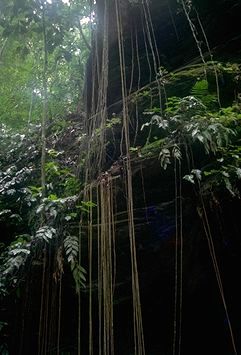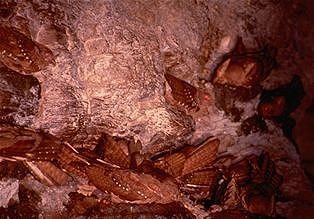 Trinidad Birdwatching Tour
Trinidad Birdwatching Tour Trinidad Birdwatching Tour
Trinidad Birdwatching TourDunstan Cave is deep in the forest below the Asa Wright Nature Centre along the mossy, vine-covered cliffs of the Guacharo River.
The cave is home to a colony of unique birds called oilbirds, also called guacharo or Diablotin. They look like large nightjars and are nocturnal. Their name comes from their food: the oily fruits of palms and avocados. The oilbirds nest on the walls of the grotto by the river in the damp and dark. When they enter the cave at night, they make clicking sounds, using echo-location to find their way to their nests. They also make low, rumbling growls and shrieks that you can hear far away in the forest if you listen carefully.
The trail to the cave 
The walk to the cave was sweaty and dramatic. It had rained that morning and this path went steeply downhill into a wet rainforest. Liana vines and strangler figs were common and the slopes were covered with dark green, shiny foliage. Our guide checked the roots of a large tree before we passed by -- in case a bushmaster was in residence. The red clay path got even wetter as we approached the Guacharo River.
Beside the river 
We stood on a flat rock in the river, three at a time - it was a small ledge - and shined our flashlights to see the birds, which didn't disturb them very much. We could see their large eyes reflecting red back at us. The birds were tightly packed on the ledges of the cave wall, sitting on mud-like mounds. I couldn't tell how far back into the cave the nests went.
Oilbirds in their cave 
Text and web design: Pamela Marshall.
Photos: David Emerson (most) and Pamela Marshall (a few).
Copyright © 1997 Pamela J. Marshall and David J. Emerson. All
rights reserved.
Last edited: June 25, 1998.